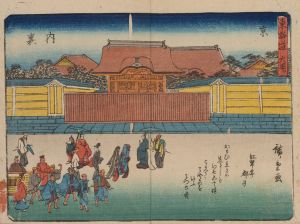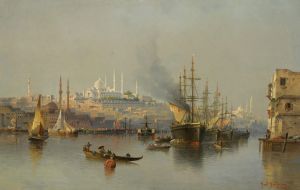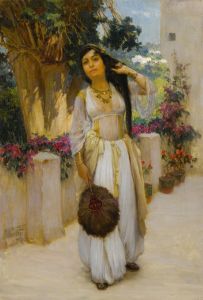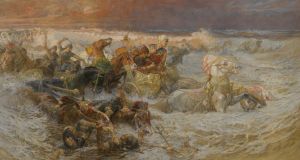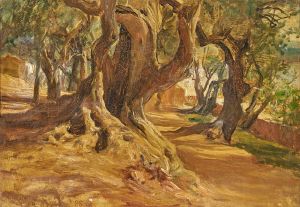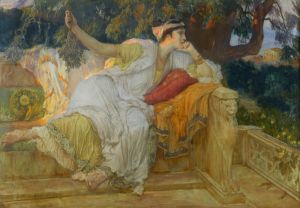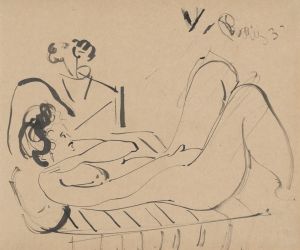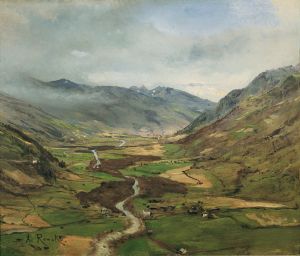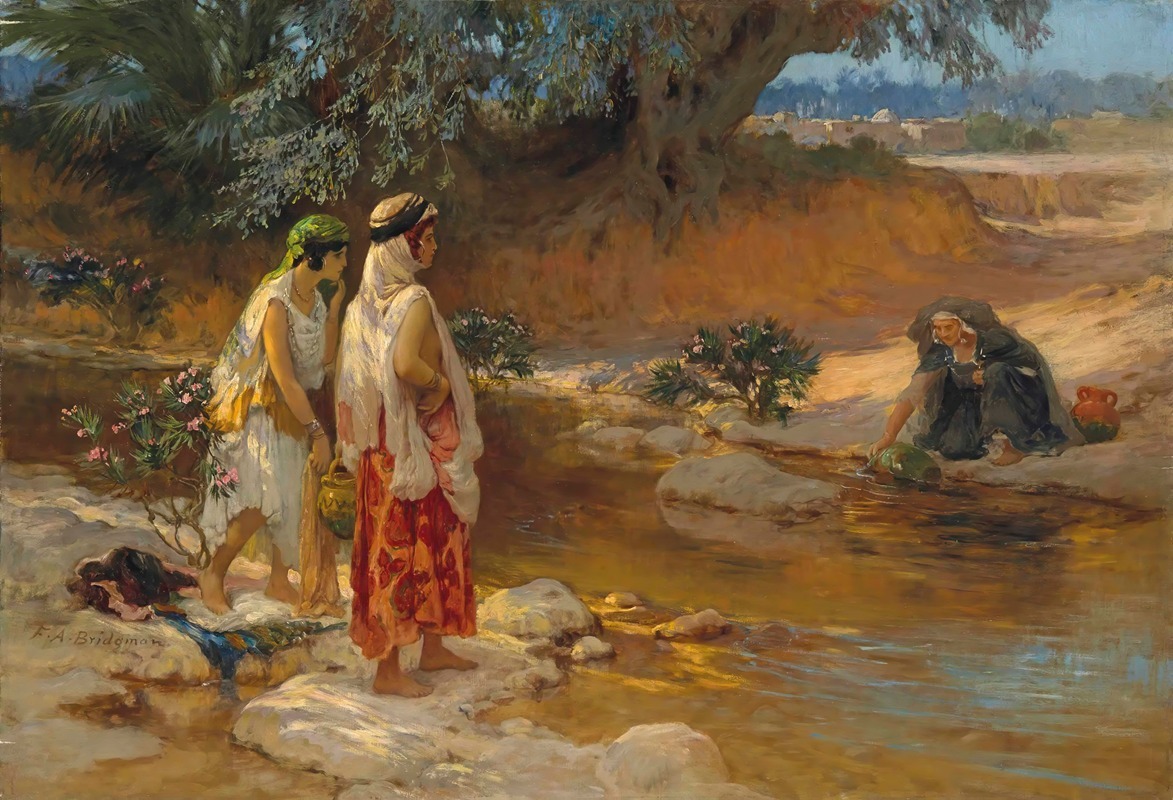
On the Banks of the Wadi
A hand-painted replica of Frederick Arthur Bridgman’s masterpiece On the Banks of the Wadi, meticulously crafted by professional artists to capture the true essence of the original. Each piece is created with museum-quality canvas and rare mineral pigments, carefully painted by experienced artists with delicate brushstrokes and rich, layered colors to perfectly recreate the texture of the original artwork. Unlike machine-printed reproductions, this hand-painted version brings the painting to life, infused with the artist’s emotions and skill in every stroke. Whether for personal collection or home decoration, it instantly elevates the artistic atmosphere of any space.
Frederick Arthur Bridgman was an American artist known for his detailed and evocative Orientalist paintings. Born in Tuskegee, Alabama, in 1847, Bridgman moved to Paris in 1866 to study art and became associated with the Orientalist movement, which sought to depict the cultures and landscapes of North Africa and the Middle East. His works are characterized by their meticulous attention to detail and vibrant use of color, capturing the essence of the regions he visited.
"On the Banks of the Wadi" is one of Bridgman's notable works, showcasing his fascination with the landscapes and daily life of the Middle East. Although specific details about this painting are scarce, it is consistent with Bridgman's broader body of work, which often depicted serene and picturesque scenes of the Orient. Bridgman's paintings typically reflect his travels and experiences in regions such as Egypt, Algeria, and Turkey, where he spent considerable time sketching and gathering inspiration.
The term "wadi" refers to a valley, ravine, or channel that is dry except in the rainy season, commonly found in North Africa and the Middle East. In Bridgman's time, such landscapes were a source of intrigue and exoticism for Western audiences, who were captivated by the romanticized depictions of distant lands. Bridgman's work, including "On the Banks of the Wadi," contributed to this fascination by offering a glimpse into the everyday life and natural beauty of these regions.
Bridgman's artistic style is marked by a blend of realism and romanticism. He was known for his ability to capture the light and atmosphere of the scenes he painted, often using a warm color palette to convey the heat and vibrancy of the Middle Eastern environment. His attention to detail extended to the clothing, architecture, and natural surroundings of his subjects, providing a rich and immersive experience for the viewer.
Throughout his career, Bridgman exhibited his works in prestigious venues such as the Paris Salon, where he gained recognition and acclaim for his contributions to the Orientalist genre. His paintings were well-received for their technical skill and the way they transported viewers to far-off lands. Bridgman's work remains an important part of the Orientalist movement, offering insights into the Western perception of the East during the 19th century.
While "On the Banks of the Wadi" may not be as widely known as some of Bridgman's other works, it embodies the qualities that made his art appealing to his contemporaries. The painting likely features a tranquil scene along a wadi, capturing the interplay of light and shadow, and the harmonious coexistence of people and nature. Bridgman's ability to evoke a sense of place and moment in time continues to be appreciated by art historians and enthusiasts alike.
In summary, Frederick Arthur Bridgman's "On the Banks of the Wadi" is a testament to his skill as an Orientalist painter, reflecting his deep engagement with the landscapes and cultures of the Middle East. Through his art, Bridgman offered a window into a world that was both foreign and fascinating to his audience, leaving a lasting legacy in the history of 19th-century art.





